[This article was first published on carbuyer.com.sg.]
The new Kia Sorento is a car of contradictions: brawny but not thirsty, big but not clumsy, premium but not pricey.
SINGAPORE — The new, fourth-generation Kia Sorento is for you if you want seven seats because you’re a family man, and you want a Sport Utility Vehicle (SUV) because… it’s hard to think of a good reason, other than not wanting to drive a Multi Purpose Vehicle (MPV), or worse, be seen driving one. Anyway, it’s your money.
And that’s precisely the point with the new Sorento. For S$156,999 (with Certificate of Entitlement) and up, it takes seven seats and puts them into a big, boxy SUV. It does it well, too, so much so that the Kia offers pretty much what a Volvo XC90 does, but for a hundred grand less.
Cycle & Carriage Kia has three versions on sale here (we’ve covered details in our launch piece) and this is the mid-range, S$166,999 Sorento SX Tech Pack.
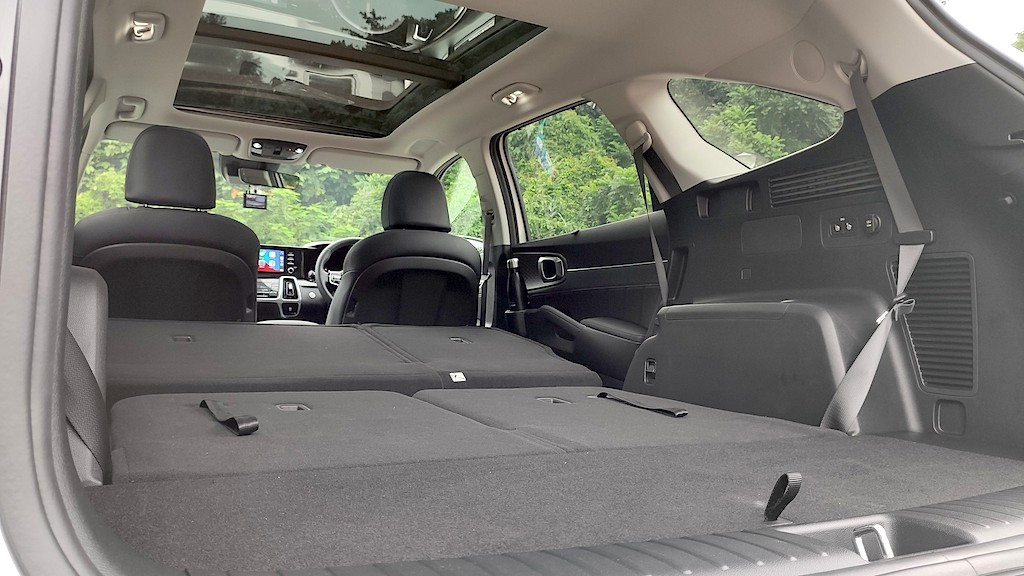
With it, you get an enormous amount of car for the money, and it’s our pick of the range. Sit back and find out why…
Thanks to current pedestrian safety standards, cars are generally more upright in the front-end now, but Kia makes this work with the Sorento. It’s unashamedly vertical up front, and broad as a tank. In fact, the Sorento’s styling uses tried-and-true visual tricks to make it look imposingly wide and planted from the front and back, without looking like a washing machine on wheels when viewed from the side.
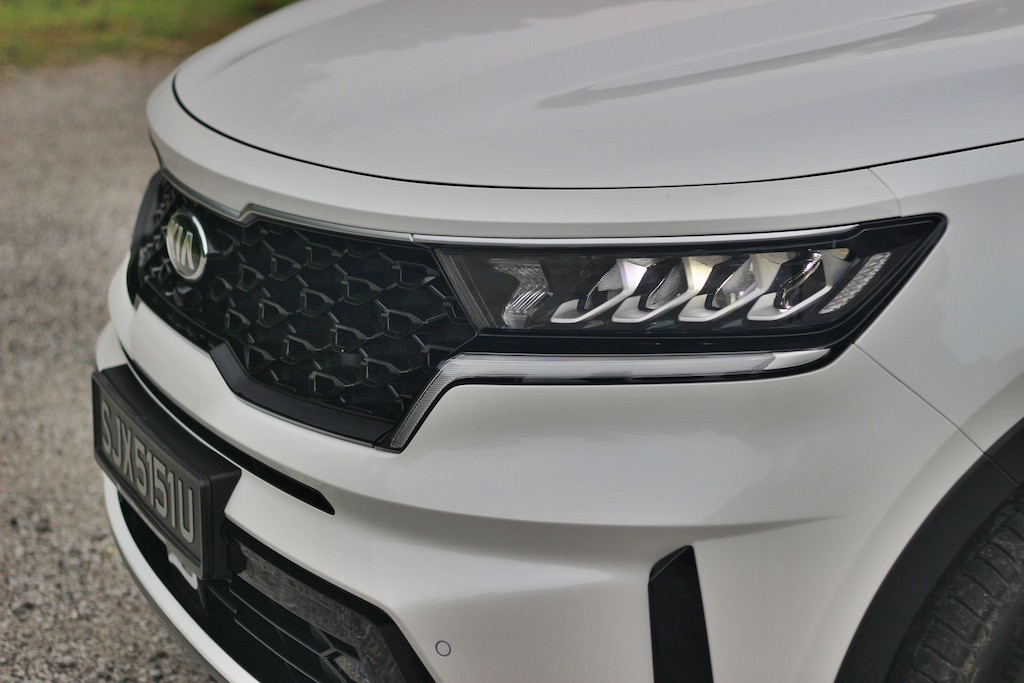
The grille blends seamlessly with the slim headlamps, making it seem like an enormous piece that spans the front of the car. The lights themselves are filled with intricate elements inside, and stretch back toward the front wheels, helping to make the front end look broader than it is.
Over at the back, the squared-off shape of the tail lamps helps to extend the corners of the tail, again to add width.
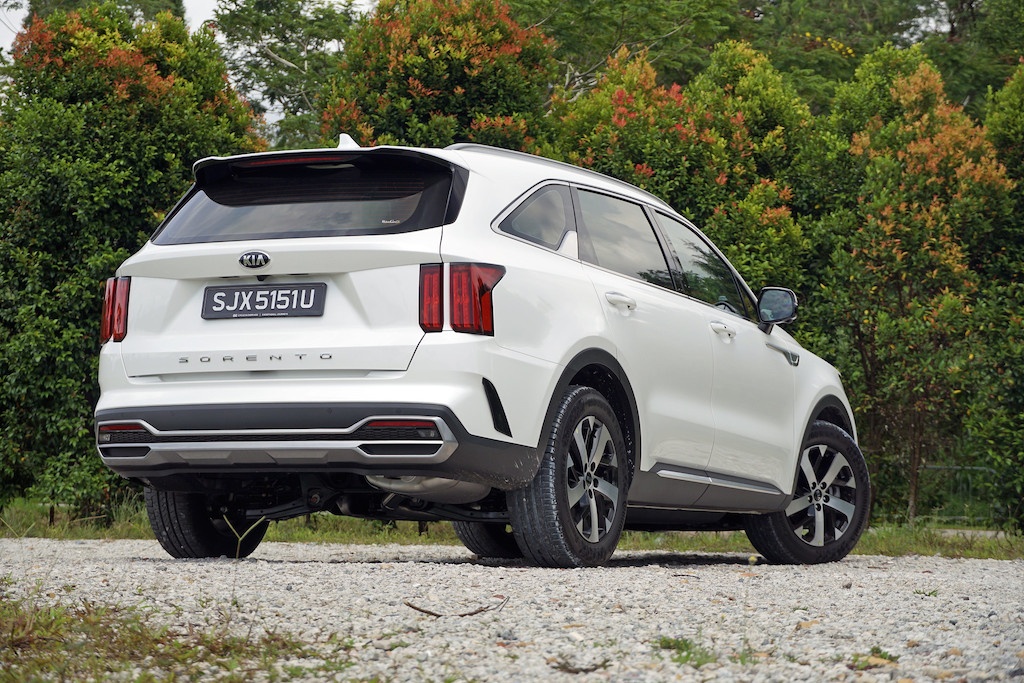
The silver trim that stretches across the lower part of the rear bumper is there for the same reason, and it’s a pure styling element — look closely, and you’ll see that the exhaust tips are fake. Audi does this, too, incidentally.
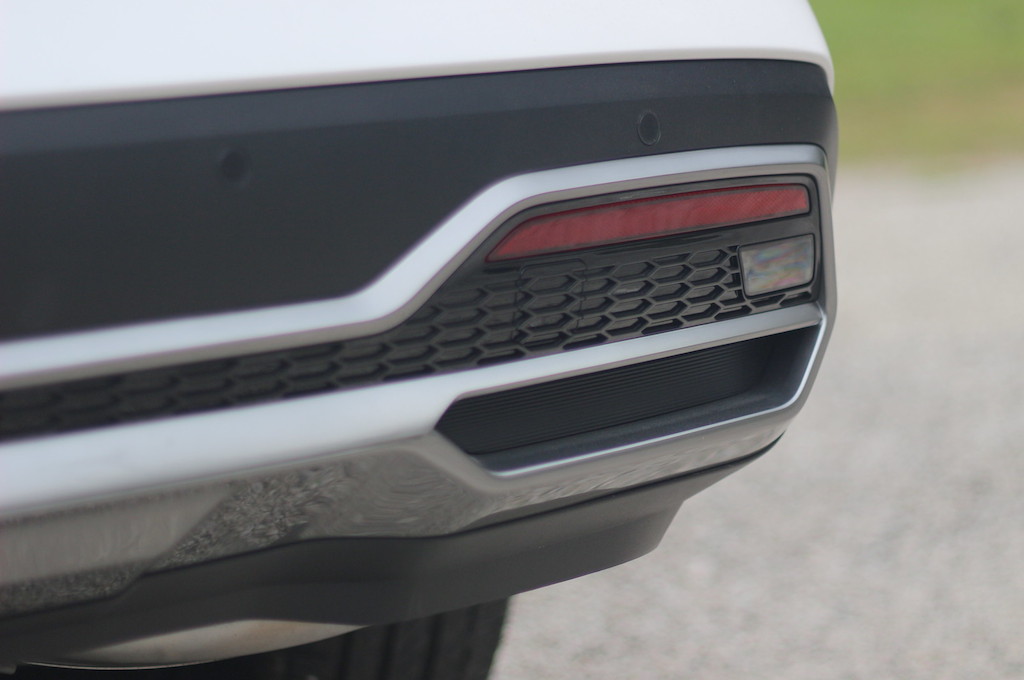
It’s the side of the Sorento where things get properly clever. Here the aim is to visually stretch the car, reduce boxiness and break up some of the bigger surfaces.
The rear windscreen tips forward, for example, which is more sporty looking than an upright hatch, but it’s countered by a tidy roof spoiler that elongates the roof. It also hides the rear wiper, which is a premium touch.
The side of the car itself has creases in the doors, just to keep that area under the glass from looking too heavy. The crease line itself rises a little toward the back, as do the lower sills in black plastic and the piece of silver trim there. Again, that visually shrinks the doors, while the rising line makes the car look like it’s slightly tipped forward, ready for action.
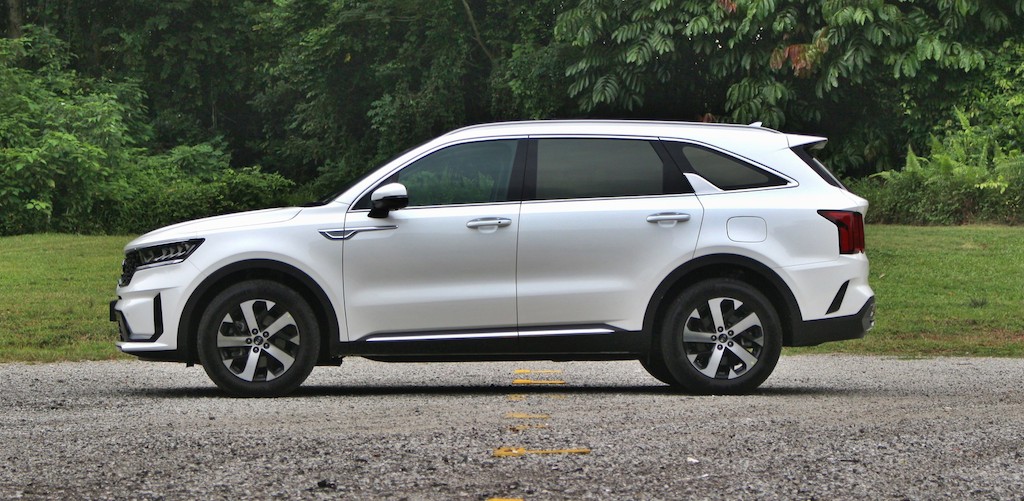
Look at the glass area; towards the back of the car, the top of the windows sweeps down, while the bottom has a gentle upward sweep. They meet at a sharp angle, which helps to slim down the glass area and fool the eye into thinking that the Kia has a lower roof than it does.
Then of course there are the carefully placed design elements, such as the small fin at the C-pillar area, or what looks like a silver vent cover on the front fenders.
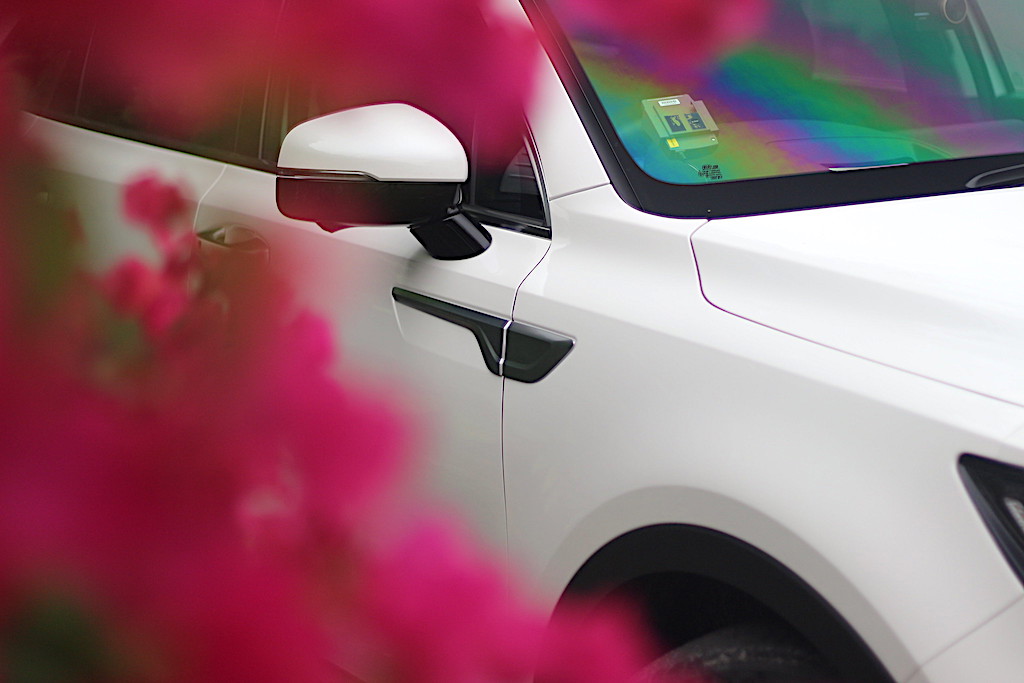
They might seem minor or random, but they tell of a lovingly designed car. And they’re part of why the Sorento looks so right: it’s imposing, yet athletic.
This being a Kia, expect a full suite of modcons, such as a powered tailgate (with hands-free opening), keyless operation, auto headlights and wipers, pull-up rear window sunshades, a 360-degree view monitor and a wireless charging pad.
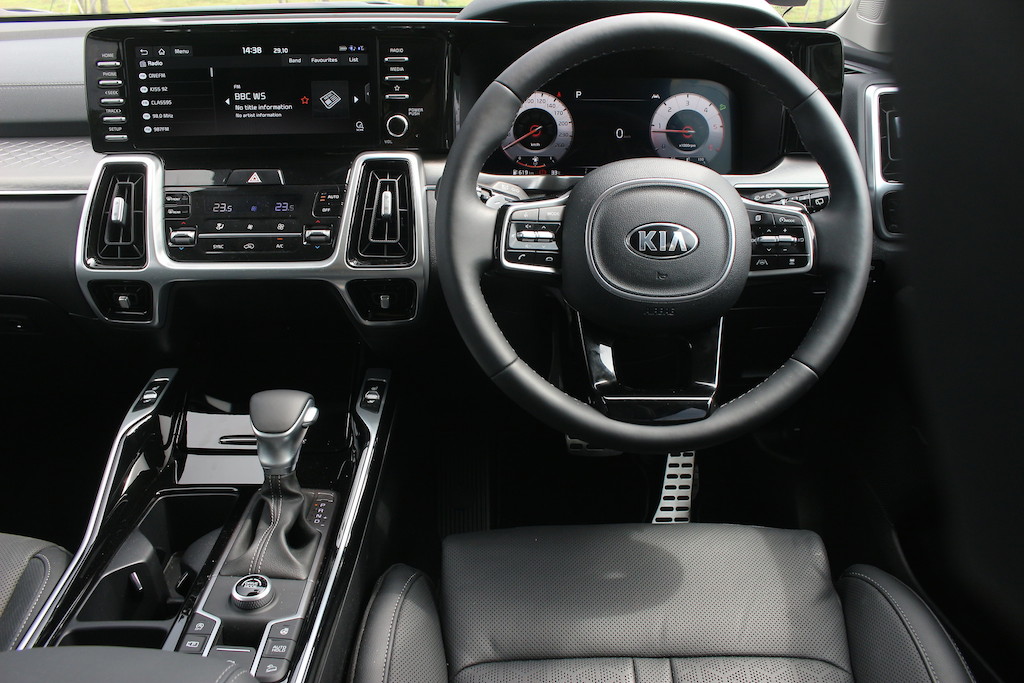
But this being the new Sorento, you’ll find the exterior’s angular design theme continuing inside, where there’s a suitably rugged looking dashboard.
In there, the plastics generally aren’t soft and posh, but they don’t feel nasty or cheap, and the bits you tend to touch a lot (namely the steering wheel and gear shifter) have a nice feel to them.
Another nice touch (literally) is the air-con control panel, which is touch-sensitive.
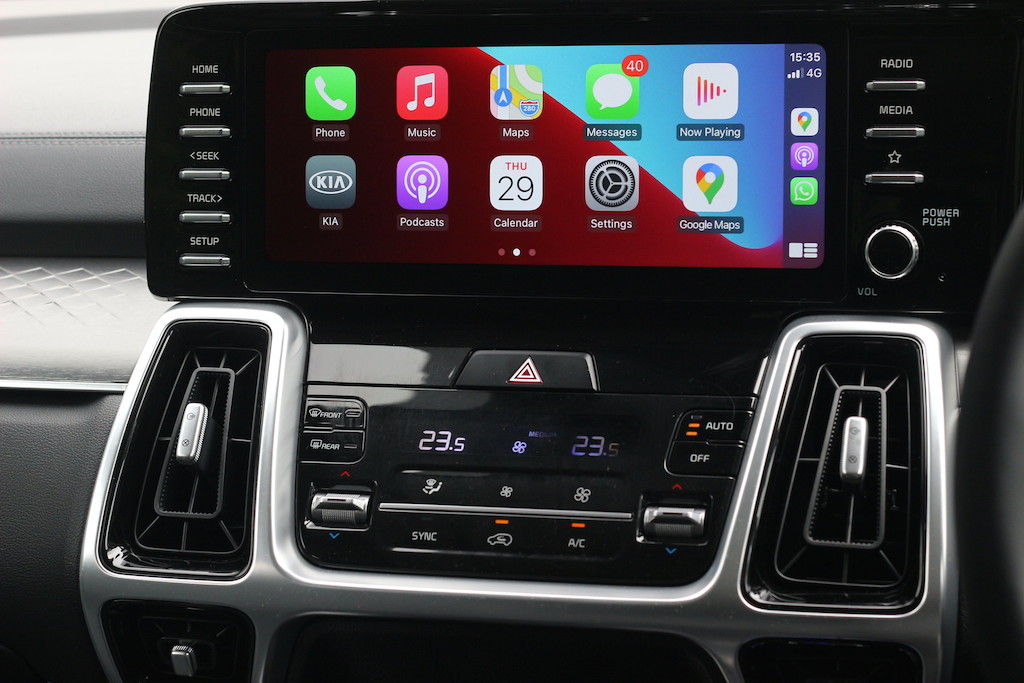
Speaking of the a/c, for some reason there are eight air-con vents up front. They’re supplemented by ventilated front seats, so you’re unlikely to feel hot and bothered inside the Kia, whatever the weather is doing outside.
The dashboard itself is dominated by a 10.25-inch central touchscreen that houses all the infotainment functions and some vehicle setting ones. It’s fairly responsive and there are still physical buttons, which makes it easier to use than systems that bury things deep into various menus. It also comes with Android Auto and Apple CarPlay, so the lack of a native navigation system isn’t something you’ll miss.
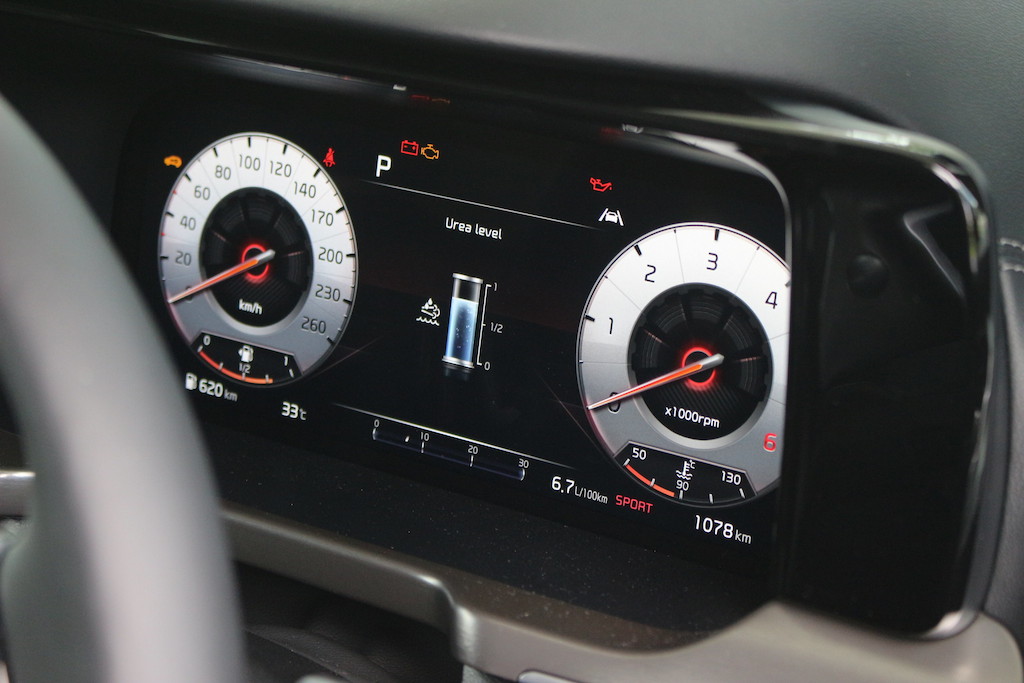
That brings us to the 12.3-inch ‘Supervision’ cluster that comes with the Tech Pack. Its displays are sharp and clear, and they transmogrify whenever you select a new driving mode.
Yet, it might have been nice to make more use of the digital real estate there, say, by altering the layout of the instruments in different modes (such as Mercedes-Benz does) or perhaps by having the navigation map appear there (as Audi does).
The fancy digital screen does come with a party trick, though. Engage a turn signal and it shows you what’s in the car’s blind spot, via a little camera on the wing mirror. The head-up display system also lets you know if things are hovering in the car’s blind spot area.
And there are conventional blind spot monitors on the side mirrors. The Sorento might be a big car, but it keeps an eye on its surroundings for you.
Mind you, keeping an eye on your general surroundings isn’t tough in the Kia Sorento. In the driver’s seat, you’re perched on a commandingly lofty position, and it’s easy to see out the large windows.
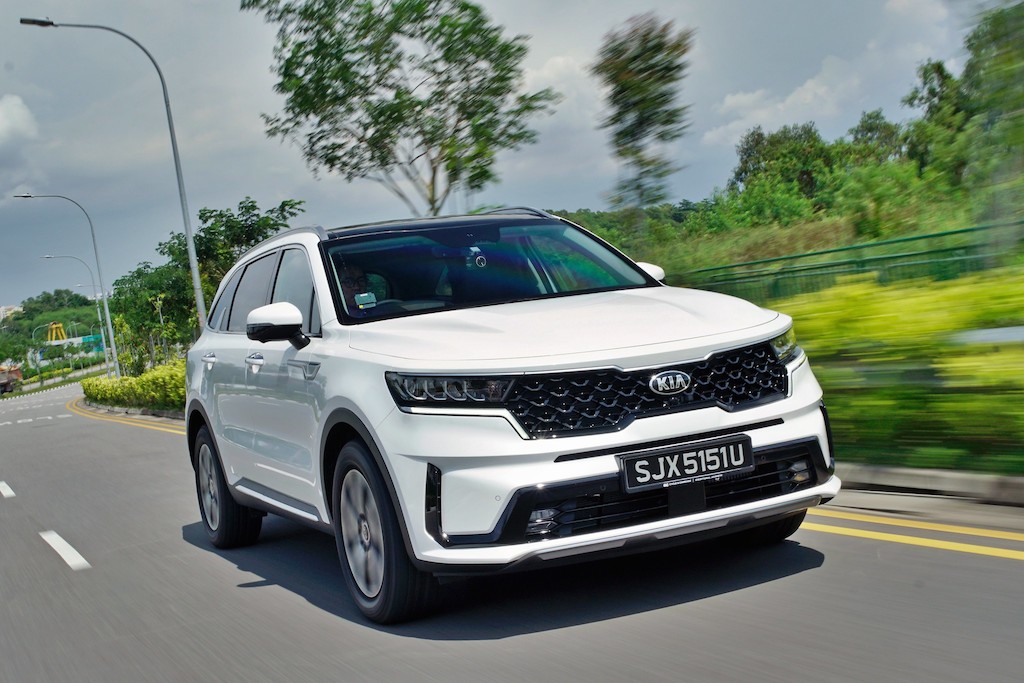
And despite the size of the Kia, it doesn’t feel heavy or lumbering. The steering may be gently-geared, but it’s direct enough that you can thread the Sorento through traffic without twirling the wheel like there’s no tomorrow.
There’s a sense of poise to the chassis, too, whether it’s in the way it soaks up bumps or in how it keeps body roll under control as you sail around a corner. You’ll notice a bit of firmness to the ride, but that’s likely because you’re supposed to put seven people in the Sorento sometimes — easily half a tonne of cargo or thereabouts — and you need beefy springs for that.
As long as you don’t expect sportscar reflexes, you’ll get along just fine with the Kia. What’s more love-hate is the drivetrain.
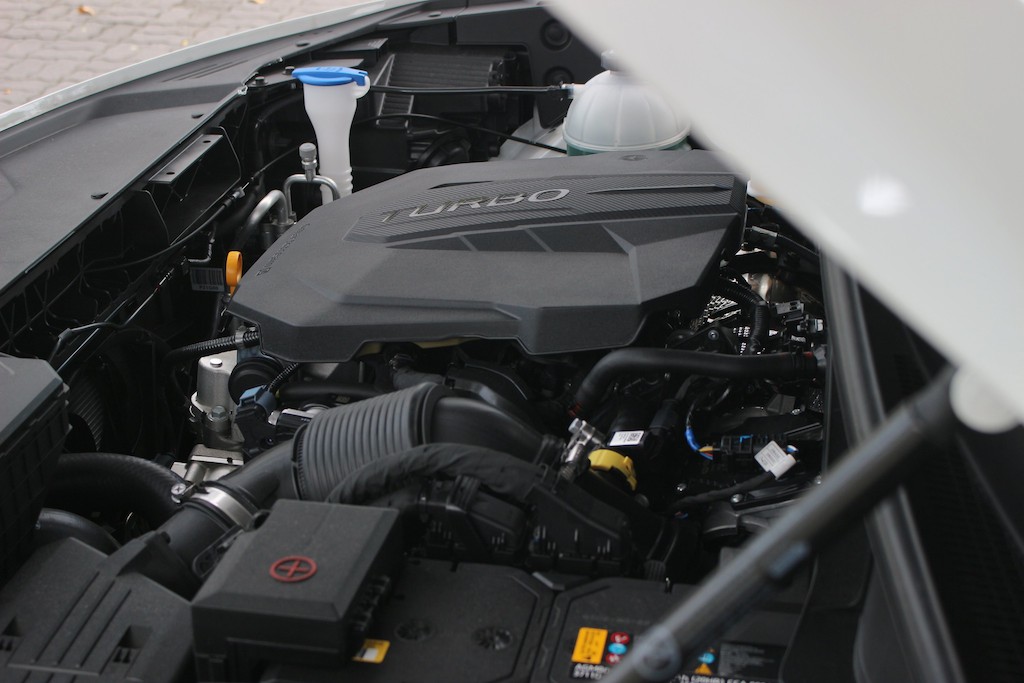
All Sorentos in Singapore have a 2.2-litre turbodiesel with an eight-speed, twin-clutch auto, and though the engine sounds faraway, it still has the voice of a diesel. Some people can’t accept that, for reasons known only to them.
Everyone else will realise that the Kia has a lusty heart. The Sorento’s 0 to 100km/h time is 9 seconds flat, and it certainly feels a bit quicker than that time suggests. That’s because the engine is endowed with loads of torque, so it’s always ready to haul the big Kia along on command. Meanwhile, the automatic shifts alertly to keep the engine in the correct revs. Once you’re above parking speeds, the gearbox is exemplary in its smoothness, too.
Where the engine really impresses is in how little fuel it wants. If you do plenty of highway driving you’ll easily keep it to less than 6L/100km of diesel, but even through the city it’s reasonably frugal — our single worst journey was a cross-town crawl at an average of just 19km/h, and even then the Kia managed 9.4L/100km.
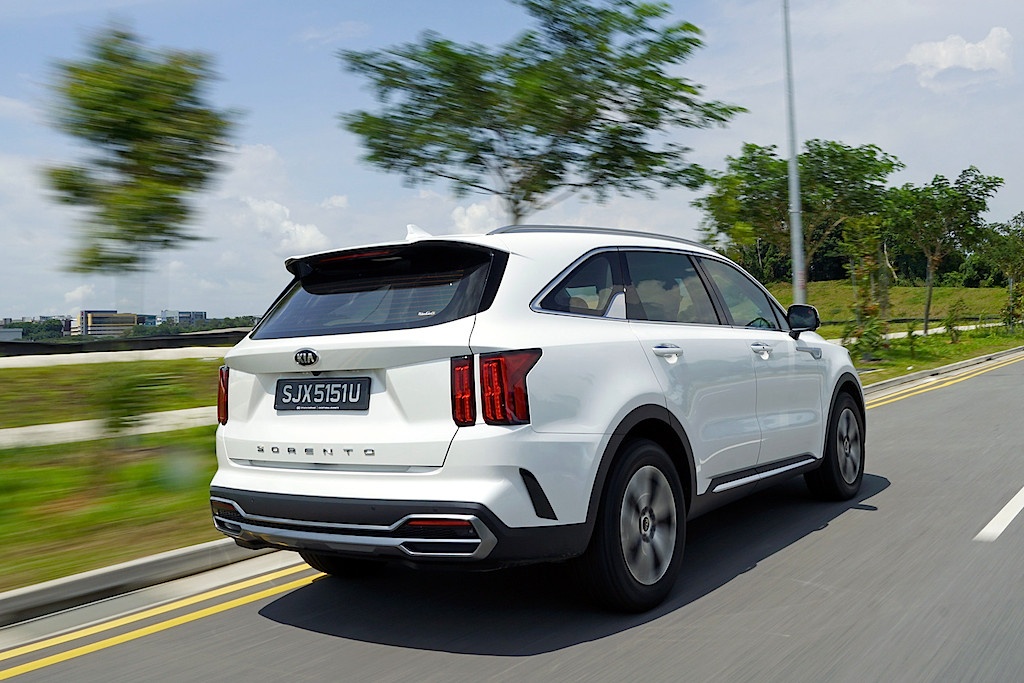
There’s a high chance you’ll have to stop for diesel just once a month if you drive a Sorento, and because diesel is cheaper than petrol, you’ll chuckle when you see your fuel bills. Mind you, the road tax bill is something like S$55 a month extra, over a petrol engine of equal size. Our guess is that the Sorento will make that up in fuel savings, and more.
If you actually find driving a chore, the Kia can do some of it for you. It comes with driver aids such as active cruise control — this locks on the vehicle in front of you and adjusts the Sorento’s speed automatically, maintaining a gap that you can set. It can even come to a halt if the ahead stops. To relaunch it, you tap the accelerator or click the cruise control switch on the steering wheel.
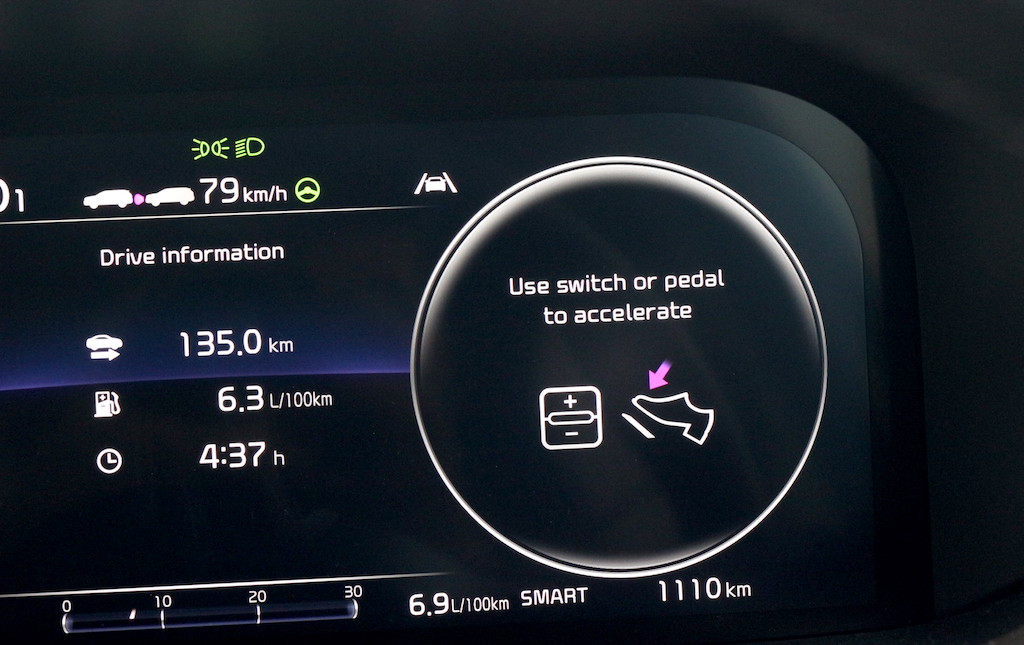
There’s also a lane keep assist function, that uses cameras to keep the Kia centred between lane markings. These systems don’t take over driving for you, but they’re there to reduce driver effort, and do take some stress out of start-stop traffic jams.
Ultimately, you never shake the feeling that the Kia Sorento is a big car (especially if you’re slender enough to roll around in the broad front seats), but it’s easy to see out of and just as easy to place on the road.
The handling is taut enough that the Sorento doesn’t feel like a small bus to drive, and the powertrain is a gem — it never feels out of breath, and more to the point, it’s efficient enough that even though the Kia is a big car, it’s as cheap to run as a small one.
If you’re starting to get the idea that the Kia Sorento is a well thought out family car disguised as a rugged SUV, you’re not wrong. The cabin is not just vast, but habitable.
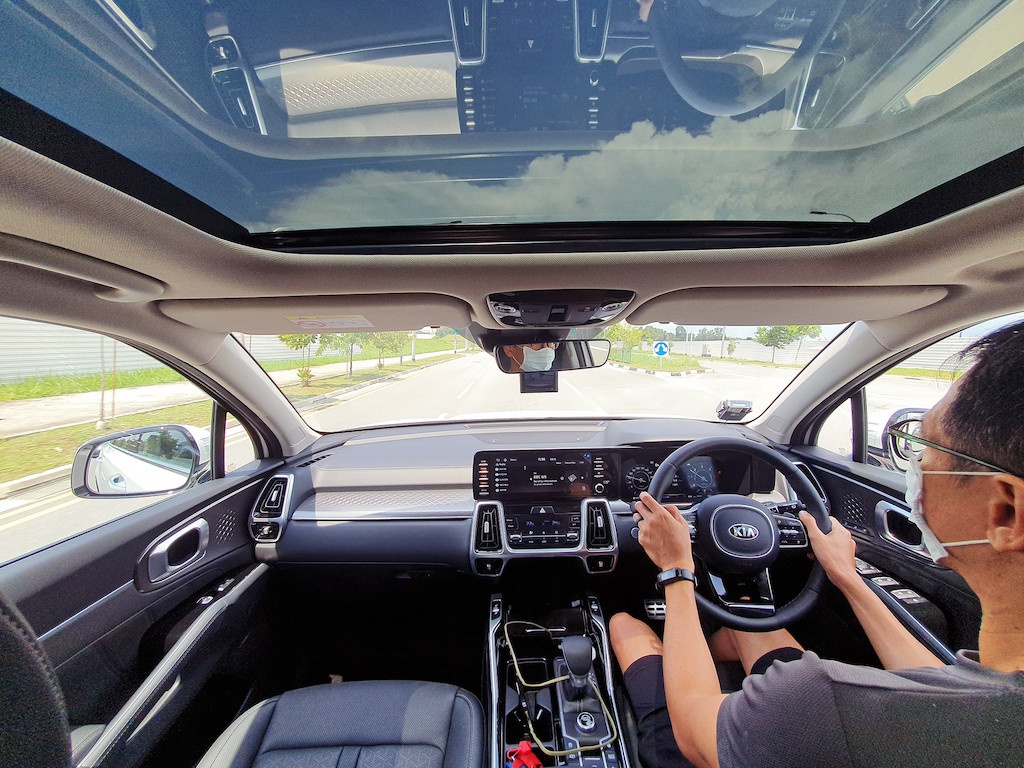
Various pockets and bins provide lots of useful storage, and the panoramic glass roof makes the interior a bright place to be. USB outlets are all over the place (including the sides of the front seats), and though our test car didn’t come with it, the third row area has air-con vents and its own blower control.
The previous Sorento was roomy, but this one has a longer wheelbase, and it feels bigger in the back as a result.
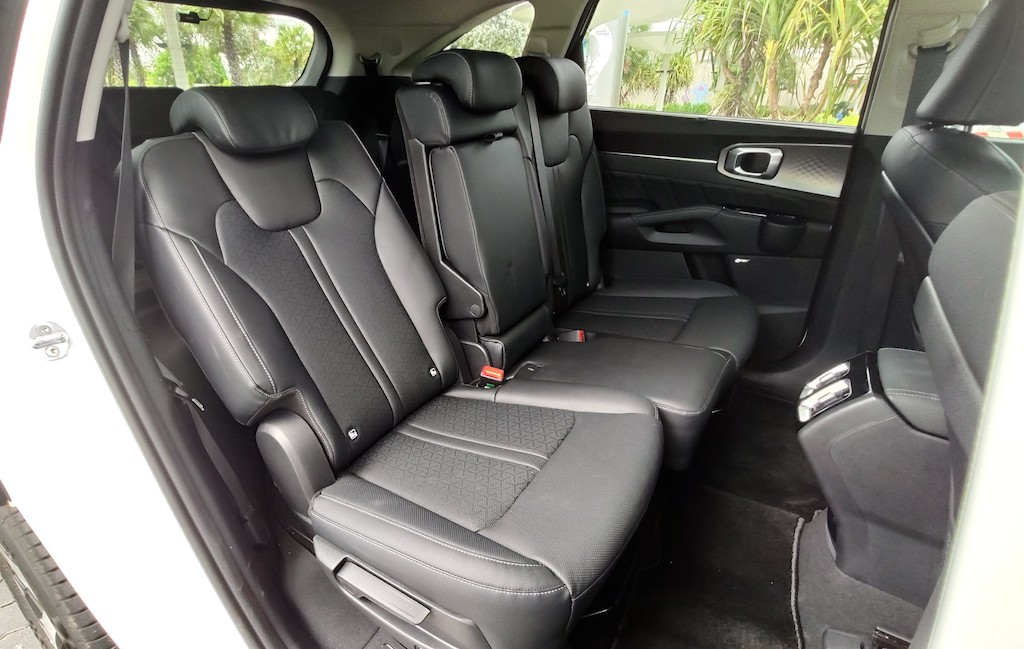
The middle row chairs recline and slide, which lets you play with how much space you want to give the people you’ve banished to the third row.
Getting into (and back out of) the very back is straightforward enough, especially since you can push a button and have the middle row chairs tip and slide out of the way.
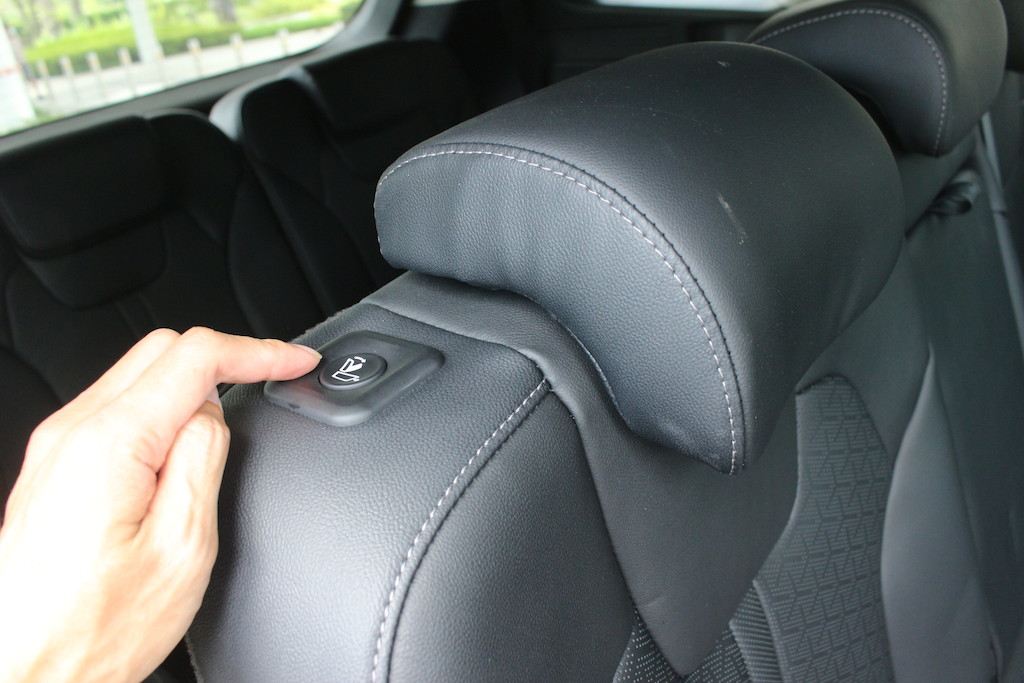
The rearmost seats will accommodate the average male Singaporean adult (who is apparently 171cm tall), and deploying them is a doddle — pulling a strap is all it takes.
Likewise, there are buttons in the back that let you drop the middle row seats down, which leaves you with a cavernous space for cargo. Even if you use five seats, however, the Sorento has 616 litres of boot space.
The bottom line is, it’s no good having seven seats in a car if using them is going to be a pain in the neck for the people in the very back.
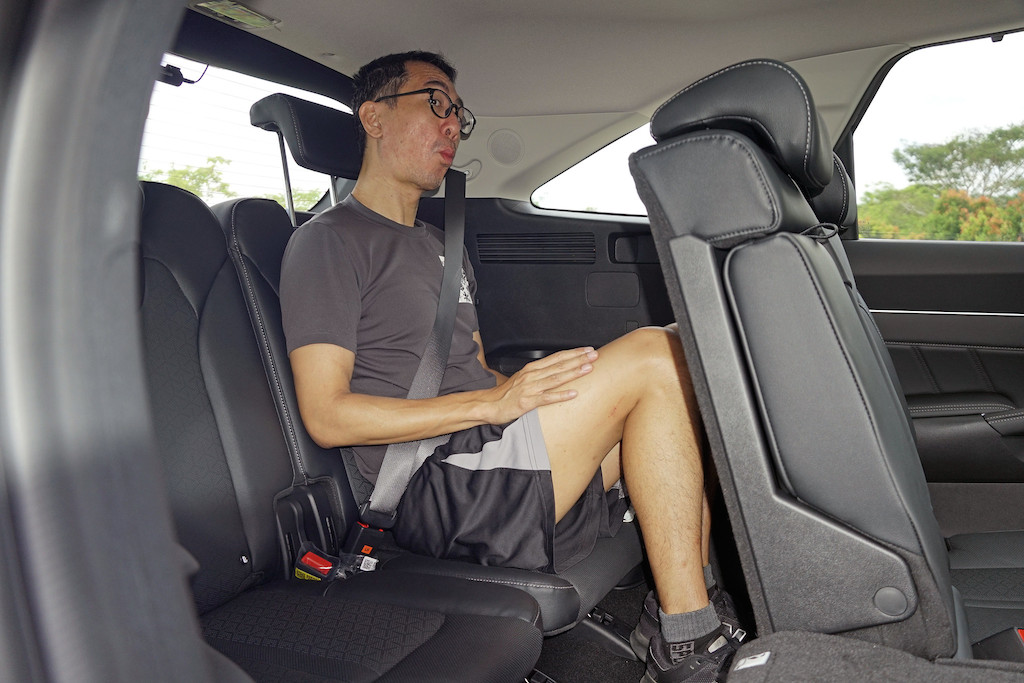
It’s also no use if actually putting those seats to use is a pain in the caboose. Thankfully, the Sorento avoids both of those issues.
The market for seven-seat SUVs is surprisingly crowded, so the Kia Sorento faces lots of serious competition. The Mercedes-Benz GLB is pricier and offers fewer features and less space, but it does have a three-pointed star, which to many people is a sort of checkmate feature.
There’s also the Mazda CX-8, a car we admire for its styling and fine driving manners. It adds the curveball of an optional six-seat configuration (something the Sorento offers elsewhere, but not in Singapore). It also has a tasteful, understated interior and a petrol engine, which makes it a worthy alternative if you have an anti-diesel bias. No seven-seater shopping list is complete without the Mazda on it, if you ask us.
Then you have the Peugeot 5008, a French take on the breed that offers less room overall, but a similar level of versatility, with a typically Gallic flourish to the cabin styling, particularly where the driver sits. It’ll suit a younger family (meaning with pre-teen kids) than would fit into the Kia, but is the most affordable of the lot.
It’s worth remembering that there are actual MPVs on the market for similar money or less. The Toyota Previa may be dated, but it’s incredibly good at what it does, as is the Volkswagen Sharan, another older but worthy car. Meanwhile, the Nissan Serena E-Power adds an electrified twist to the whole family bus genre.
As we said, plenty of competition out there for the Kia Sorento...
Just as well, then, that the new Sorento is such a strong contender in its own right. It’s generously sized without feeling oversized when you’re behind the wheel. Its engine pulls like a beefcake without having the appetite of a bodybuilder. And it comes with premium car features without the premium car price tag.
The only thing it lacks is a premium car’s badge, but there are more important things in life than luxury branding. You’d think that someone who needs seven seats would know that.
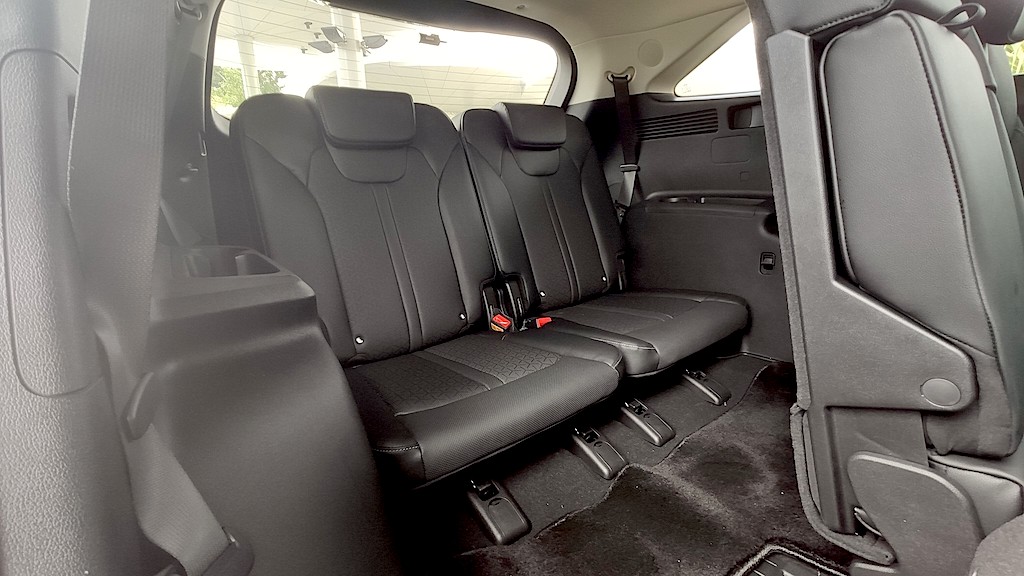
Schedule a Digital Consultation
[Source article: carbuyer.com.sg/2020-kia-sorento-review-singapore-price-2]
